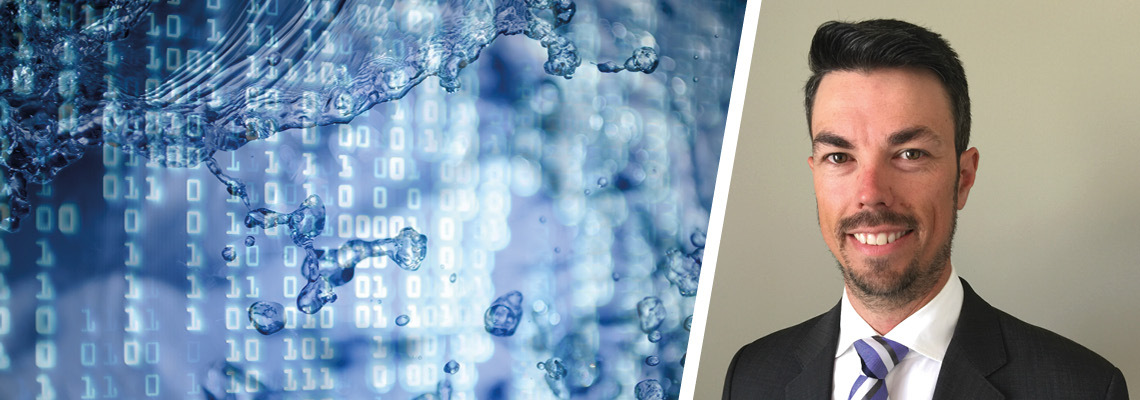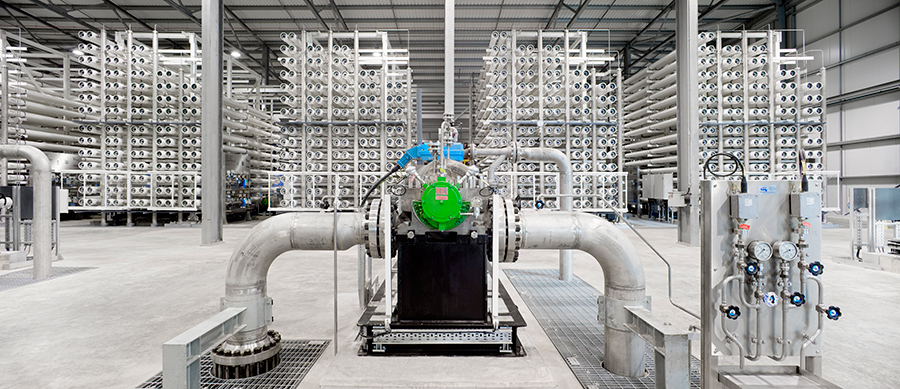
Mike Dixon believes now is the time for desalination plants to embrace digitalisation and is on a mission to merge Artificial Intelligence with reverse osmosis. He speaks to Tom Freyberg about why he kept his software as a service company, Synauta, in stealth mode before launching.
Imagine developing a solution for the desalination business but not being able to tell anyone. Blood, sweat and tears have gone into creating “your baby”, after spotting a gap in the market.
It keeps you up at night. You’re desperate to tell fellow desalination experts, peers and friends. You attend events (pre-Covid), have a game-changing solution in your locker but have to keep it under wraps.
Potentially frustrating, right?
This was the case for Mike Dixon, who kept Synauta in “stealth mode” during the initial phases in 2018. While keeping it confidential, he was busy filing patents on energy and chemical optimisation and building a minimum viable product (MVP).
He also didn’t want to announce the news too early without tangible results for fear of the Artificial Intelligence (AI) solution being perceived as “hot air”, or a gimmick.
The strategy is understandable. In a market where new inventions claim to single-handedly hold the answer to water scarcity, often over-promising and underdelivering, it’s better to wait to release a solution deemed as “proven”, rather than hyperbole.
The CEO reflects that although this "radio silence" was challenging, it was ultimately the right decision.
“It was a big decision in ego and understanding more about myself and my motivations for the business.”
"It was a big lesson in ego and understanding more about myself and my motivations for the business," he says. "At the end, going stealth for a couple of years was the right call, and today I believe Synauta is in a stronger position as a result.”
Before launching the business, Dixon spent many years in different roles, including being an operator and R&D engineer in Australia and an applications development manager for NanoH2O, acquired by LG Chem in 2014.
Despite witnessing first-hand how hundreds of desalination and water treatment plants worldwide operate, it was on vacation in 2017 when the spark for Synauta started.
“I was reading Isaac Asimov novels on vacation, and that inspired me to learn more about artificial intelligence (AI) - an area of computer science that, like Asimov’s novels, has been around since the 1950s but is now more relevant through faster computer processing capability,” he recalls.
“With further research into machine learning, which is a subset of AI, I realised a realistic way to tackle the challenge of energy and chemical optimisation in reverse osmosis.”
He says that while he could see a gap in the market to optimise existing RO desalination plants, he “didn’t have realistic ideas on how to address it, let alone thoughts of starting my own business”.
“It’s funny how reading a fictional novel on holiday can be a catalyst to look at a problem in a new way.”
A year later, in 2018, Dixon continued to consult, directing any revenue directly into the start-up. A grant from Alberta Innovates then enabled the firm to partner with consultancy, Aqua Advise, on market research to further develop its MVP.
After support from the National Research Council of Canada Industrial Research Assistance Program (NRC IRAP), it was in November 2019 that Synauta secured $1.2m from Sustainable Development Technology Canada (SDTC). This enabled four consortium partners across Australia, the Middle East, Europe and Canada to test and refine the technology.
Finally, in July 2020, the company was successful in the Water Innovation category for the Alberta Innovates Digital Innovation in Clean Energy program.
“Looking ahead we have options for growth-capital identified,” adds the CEO.
Based on a Software as a Service (SaaS) business model, the company works with seawater, brackish and reuse RO plants. The solution focuses on plants with a “good backlog of data in their SCADA history”, as well as plants facing “cleaning challenges”.
With 20,000 SWRO plants globally, the CEO naturally is optimistic about the potential – “this represents an excellent market size”. Dixon describes the SaaS model as “the same as you or me paying a monthly fee for Netflix”.
"This model means we can continue to improve our software without disruption to the customer, compared to a more traditional model where a company pays for software upfront - and what you get that day could be what you are stuck with for years!" he adds.
“Trials have yielded results of 5-10 per cent average energy savings and up to 20% chemical savings.”
Synauta has been working with a handful of customers to undertake trials at various RO plants, including more than 200,000 m3/day, yielding meaningful results of 5-10 per cent average energy savings and up to 20 per cent chemical savings.
Synauta released its first case study from a 4,000 m3/day RO plant in Western Australia, managed by Osmoflo. By manipulating plant recovery based on three set points over six months, the company says it was able to better match daily operating conditions to the plant design, saving energy costs equating to AU$65,000 per annum.
Competition in the water industry is healthy and beneficial for all involved; it makes the market responsive and drives differentiation.
Dixon acknowledges efforts already underway in this “AI meets RO” space. For instance, Spanish engineering company Acciona is using AI in its BIONS data platform and recently leveraged digital twin technology, using AI techniques in complicated systems, to commission Al-Khobar 1 in Saudi Arabia from Madrid.

Meanwhile, French firm Veolia has also used machine learning to reduce downtime for RO membranes in Oman.
“Some larger players are building pieces of the puzzle to optimise desalination, while Synauta has built other pieces already,” adds Dixon. “For a lot of AI applications in water, the question is buy versus build.”
The CEO believes that the challenges are not typically technology-based for larger companies, but more centred around the culture and strategies to enable digitalisation. This can include overcoming internal obstacles, budgets and shuffling priorities hampered by layers of bureaucracy.
Other parts of the water sector, primarily drinking water networks, have been flooded with digital solutions. In comparison, desalination processes have taken longer to integrate AI, especially with RO processes. Why is this?
Dixon says it has made sense to focus on “customer-interfacing capabilities”, such as drinking water networks, as public entities' customers can see the value in smart metering or reporting leaks.
“Industrial process optimisation perhaps isn’t seen as “cool” as a new shiny mobile app.”
“Industrial process optimisation, which is what Synauta does, perhaps isn't seen as "cool" as a shiny mobile app, but more and more decision-makers understand the value of new technologies to improve processes, distribution and operational management,” he says.
It's interesting to note AI has been used in the power industry for some time. One reason for this could be that there are plenty of electrical engineers in the power industry, and electrical engineering is a topic closely related to computer science.
“I also think it's taken a while for AI to be integrated into something like RO because if a water system fails, there can be serious impacts to communities,” says the CEO.
“You won’t get ill because a Zoom call doesn’t connect or because Facebook goes down, although some may disagree. Unlike software industries, or media or financial services that are highly digitised, it takes time to iterate an entire water treatment asset.
“We can adopt tech faster in the water industry, but we will rightly never move at the rate of industries where the consequences of errors don’t have health impacts.”
Share your water technology stories with us
Do you have an innovation, research results or an other interesting topic you would like to share with the international water technology industry? The Aquatech website and social media channels are a great platform to showcase your stories!
Please contact our Sr Brand Marketing Manager Annelie Koomen.
Are you an Aquatech exhibitor?
Make sure you add your latest press releases to your Company Profile in the Exhibitor Portal for free exposure.